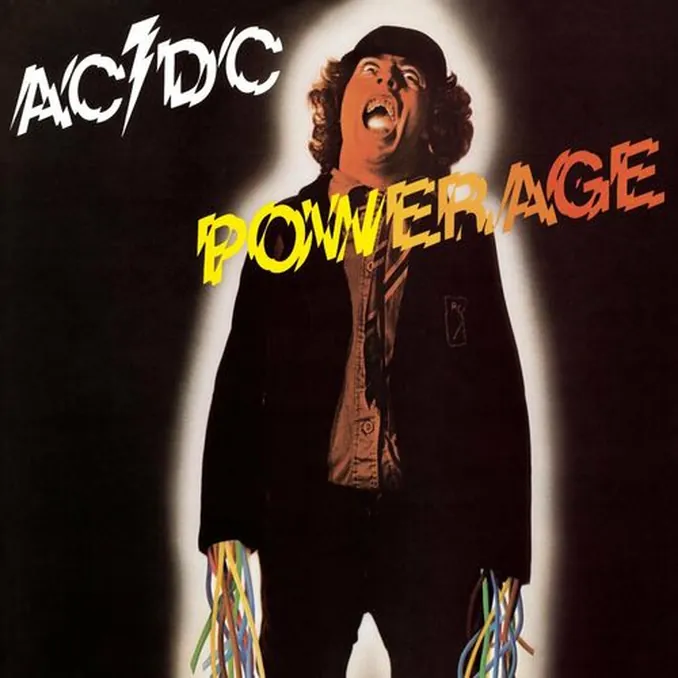The Myth of the AC/DC Song Fans Think Began With a Broken String

Summary
- What’s Next to the Moon began as a casual guitar riff, not a broken string myth. Angus Young turned a tuning session into a full song.
- Bon Scott’s lyrics came from personal heartbreak, his partner left him in 1977. The result: one of AC/DC’s most cryptic and emotional tracks.
- Powerage remains a fan and musician favorite, despite modest chart success, it’s often seen as AC/DC’s most underrated album.
When people think of AC/DC, they picture loud guitars, big choruses, and songs built for stadiums. Tracks like Back in Black, Highway to Hell, and Thunderstruck are what most fans hear first.
But hidden on their 1978 album Powerage is a song that doesn’t get the same attention. It’s called “What’s Next to the Moon”, and for many longtime fans, it’s one of the band’s most interesting and emotional songs.
Related
The song is often referred to as a “deep cut,” a term for songs that don’t get played on the radio but hold a strong connection with fans who really know the band’s music.
How It All Started
There’s a popular myth that the song came from a broken guitar string during a recording session. It sounds like something straight out of a rock documentary, but it’s not true.
The real story is simpler. Angus Young, the band’s lead guitarist, was tuning his guitar and came up with a short riff. It wasn’t planned. It wasn’t part of a jam session. It was just something he played while getting ready.
That quick riff stuck with him. And eventually, it turned into the music for “What’s Next to the Moon.” The process shows how AC/DC often created songs. They didn’t overthink. They just played. And sometimes, something special came out of it.
The final version kept the raw feel of that original idea. Angus used basic power chords to build the backbone of the song, and the rest of the band followed his lead. The result is a track that feels both simple and powerful.
The Lyrics Come from Real Pain
The music may have started from a guitar riff, but the lyrics had a much more personal origin. Bon Scott, the band’s lead singer, wrote the words. They came from a tough time in his life.
In late 1977, Bon’s girlfriend, Silver Smith, left him. She bought a train ticket and headed to California.
Bon stayed behind in Indianapolis. He later told audiences that the song was about “a lady who took it upon herself to do whatever she wanted to do.”
The lyrics of “What’s Next to the Moon” are different from most AC/DC songs. Instead of talking about partying or chasing women, the song dives into themes of heartbreak and confusion.
Some fans even see darker meanings in the lyrics, like murder or suicide, though nothing is confirmed.
The song has been described as a kind of “stream-of-consciousness poem.” There’s no clear story, just a lot of emotion and strange images.
It’s the kind of song that people interpret in different ways.
Why the Song Still Matters
The mystery in the lyrics is one of the reasons the song has stuck with fans for so long. People continue to discuss it online, offering theories about what it really means.
Some think the title refers to hopelessness, or looking for answers in places that don’t have any.
Whatever the meaning, the song stands out from the rest of the album, and from most of AC/DC’s catalog.
It shows a deeper, more thoughtful side of the band. And it’s a big reason why fans and critics often say that Powerage was Bon Scott’s best work as a songwriter.
Powerage

Powerage came out in May 1978. It was the band’s fifth studio album and marked an important moment for AC/DC.
The album wasn’t a huge hit when it first came out. It didn’t have any major singles. In the U.S., it peaked at No. 133 on the Billboard chart. But over time, it gained respect.
Musicians like Eddie Van Halen, Keith Richards, Slash, and Joe Perry have all called Powerage their favorite AC/DC album. Critics have also praised its sound and songwriting.
Produced by Harry Vanda and George Young (Angus and Malcolm’s older brother), the album has a rough, punchy sound. There’s very little polish, which makes it feel more real. Many fans say it captures the band at their most honest and creative.
It was also the first AC/DC album to feature bassist Cliff Williams, who would go on to become a key part of the group’s sound.
The album was recorded in both Sydney and London. Some versions of the record, especially early U.S. releases, had different mixes and track orders. That kind of variation was common in the band’s early days.
The Song’s Sound
The music of “What’s Next to the Moon” is another reason fans keep returning to it. Phil Rudd’s drumming stands out for its rhythmic detail. Critics have described it as having a “voodoo” feel because of its off-beat tom-tom patterns.
The bassline is steady and powerful. On vinyl versions of the album, the low end is especially clear, making it one of the best-sounding AC/DC songs for fans who care about audio quality.
The vocals at the end of the song are also unique. Bon Scott is joined by Malcolm Young and Cliff Williams for what fans call “chain gang vocals.” Each voice is clear and separate, creating a layered sound that’s rare for the band.
Then there’s Angus Young’s guitar. The solo in this song is a highlight. He uses techniques like alternate picking, string bending, and vibrato to bring emotion and texture. The outro has his signature tremolo picking, adding urgency as the song fades out.
A Different Side of AC/DC
For a band known for simplicity, “What’s Next to the Moon” is surprisingly complex. It shows that AC/DC could write songs with layers, musically and emotionally. While the band often gets labeled as straightforward hard rock, tracks like this one prove there’s more going on.
The band’s blues influence is clear in the song’s tone. Angus’s soloing, in particular, draws from blues phrasing more than typical metal shredding. There’s control in his playing, not just speed or volume.
The same goes for Bon’s lyrics. They aren’t trying to make people laugh or shout along. They’re more like a short story, with strange characters and a haunting tone. The result is a song that sticks with you.
A Song That Keeps Giving
Even decades later, “What’s Next to the Moon” keeps finding new fans. One example: singer-songwriter Mark Kozelek released an acoustic album of AC/DC covers and named it after this song. His version is quiet and slow, but it keeps the emotion intact. That kind of cover proves the song has meaning far beyond its original genre.
Songs like this are often called “deep cuts” because they aren’t hits. But that term doesn’t fully explain their value. These are the songs that fans bond over. They share them with friends.
They argue about what the lyrics mean. They feel like they’ve found something hidden.
That’s what gives a song like “What’s Next to the Moon” its staying power.
Final Thoughts
“What’s Next to the Moon” is a piece of music history that shows AC/DC at their most creative and emotional.
It wasn’t a hit. It doesn’t show up on greatest hits albums. But it doesn’t need to. Fans know its value. And as long as people keep listening closely to Powerage, they’ll keep finding meaning in it.
At just under four minutes, this song packs in more depth than many entire albums.
That’s why it remains a favorite for those who go beyond the surface, and why it continues to matter, more than 45 years after it first played through someone’s speakers.
Got a tip for us? Email: [email protected]
In an interview with Rolling Stone in 2021, guitarist Angus Young opened up about a moment that split fans of AC/DC, when Axl Rose stepped in as lead …








